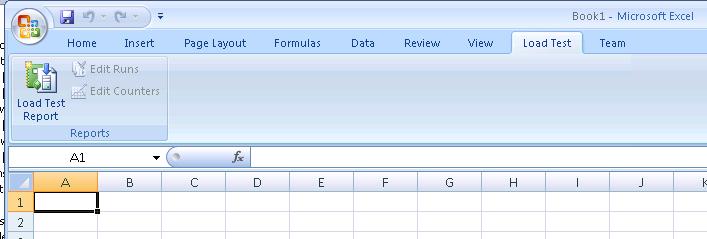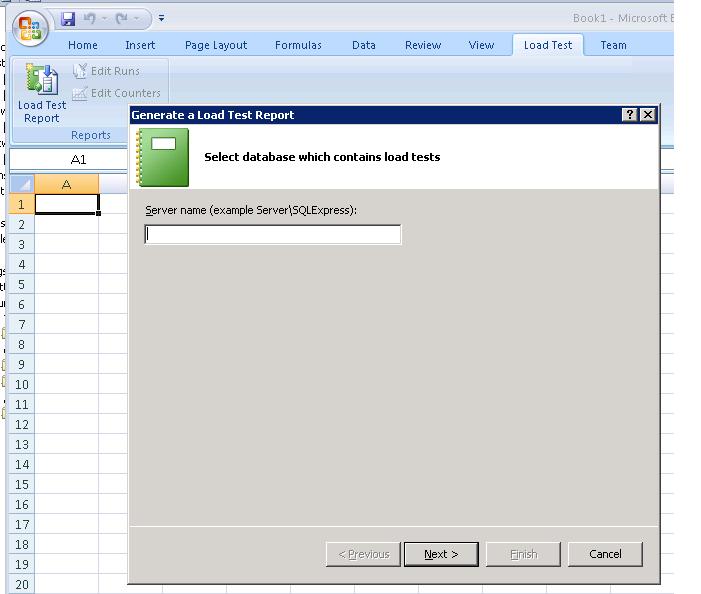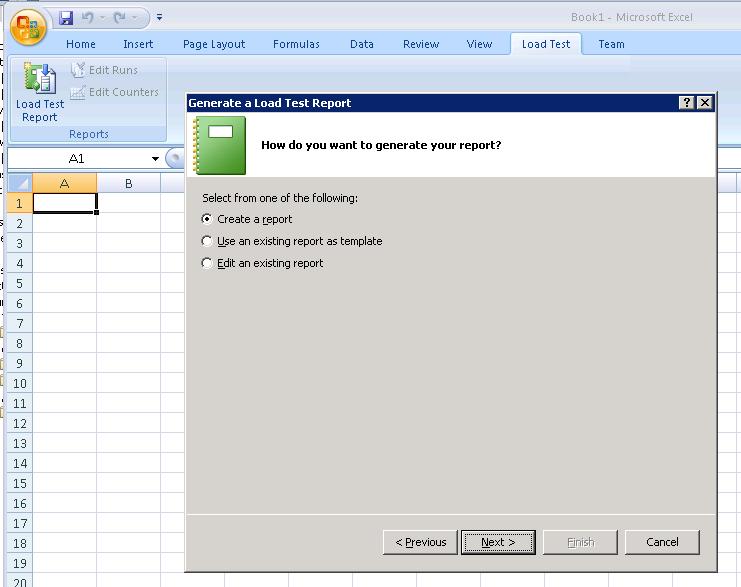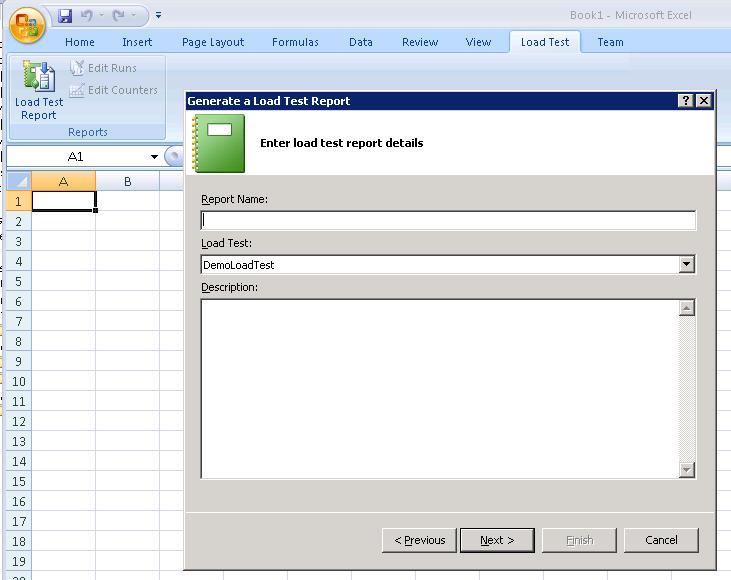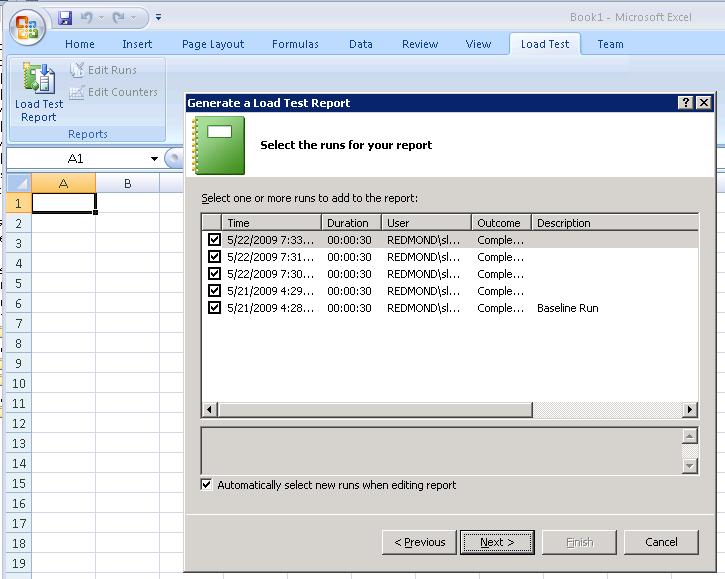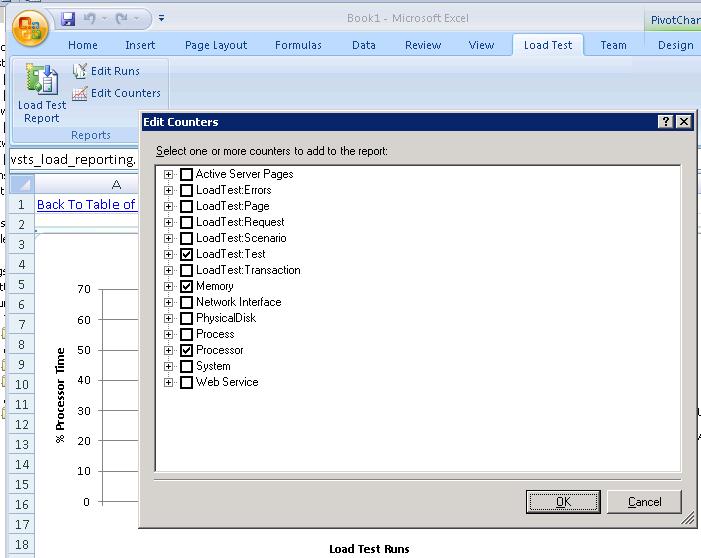VSTS 2010 Feature: Creating excel reports for Load Test Data
Now that VSTS 2010 beta 1 is available I will be writing a series of blog posts highlighting new Web and Load testing features. You can get the beta here: beta download
The first feature that I want to review is creating load test run to run comparison reports with excel. With this release we have built integration into excel that will allow you to choose a set of runs and a set of counters and then have the reports automatically generated.
Accessing the new report wizard
First, you need to be running excel on the machine that Visual Studio is installed on. You will only be able to create the reports from that machine. Once created, you will be able to share the excel workbook with other users, but they will not be able to modify the report.
There are 2 ways to access the new report wizard:
1) Launch Excel – This is easier way. Just launch excel. You will see a new ribbon called Load Test. Click on the load test ribbon.
2) From the load test analyzer – After running a load test and going into post run analysis UI, you will have a new button which will launch excel and then automatically bring up the wizard.
Generating Reports
Let’s walk through creating a report.
1) Launch Excel
2) Click on the Load Test ribbon
3) Click the New Report button. You will also be able to modify existing reports and we will go over that later.
4) When click the button you will see the following:
5) On the first page of the wizard, you need to enter the database that the load test results are being stored in. For example, if my database was on a machine called Perf1 and I was using sql express, I would enter Perf1\sqlexpress. Then click next.
6) On the next page you have 3 options.
a. Create a brand new report.
b. Modify an existing report. This option will allow you to choose a report that you have previously created and regenerate it. You will also be able to modify settings such as runs to display or counters to display. The reason that we can do this is that the report definitions are stored in the load test results store. When we get to the end of the wizard and click finish, the report definition including runs and counters will be stored. That way if you lose your workbook and need to recreate the report, you can just pull it up and recreate it.
c. Use an existing report as a template – This is useful if you have created a report that has all of the counters that you like to see. You will see on the next screen that you need to choose a load test for the report. Then you will be presented will all of the runs for that load test. So if you have created a report for load test 1 and now want to use it for load test 2, you would choose this option.
Choose Create a Report and click Next.
7) On this screen you need to enter a name for the report and choose a load test.
8) The next screen will display all of the runs associated with the load test. If you have added analysis notes to the run, they will be displayed. Here is a blog post adding these notes. They will become very useful when selecting runs: Adding Analysis Notes. Select the runs you want to include and then click next.
9) The next screen will show you all the of the counters that are available to graph. This will include all counters you collected for the runs that were selected. Select a few counters and click Finish.
10) Now the set of reports will be automatically generated.
Viewing the Reports
The reports which are generated will be a set of pivot tables and charts.
Here are the set of reports that will be created.
1) Table of Contents – This will display the name as well as hyper links to each of the reports that were created.
2) Runs – This worksheet will show you each of the runs that were selected:
3) Reports for counters. – Then you will have one worksheet for each counter selected. The x axis is the run number. So this will give you an idea of how the counter is trending from run to run .
Editing Existing Reports
After generating the report, you can modify a few things. You can change the selected runs and the selected counters.
1) Click the Load Test ribbon again.
2) Click the Edit Runs button. This will display the runs that are currently displayed. You can remove runs or maybe you want to add runs which have completed since you generated the report.
3) Click the Edit Counters button. This will allow you to change the set of counters that are displayed.
Sharing Reports
As mentioned above, once you have generated the report, you can share the workbook. You will only be able to modify the workbook on a machine that has VS installed on it. Other users will not see the Load Test ribbon, but they will be able to view the workbook.
Hopefully this feature will help with creating reports that can be shared with the rest of your team. Please provide feedback on this feature.
Comments
- Anonymous
May 22, 2009
Now that VSTS 2010 beta 1 is available I will be writing a series of blog posts highlighting new features.
